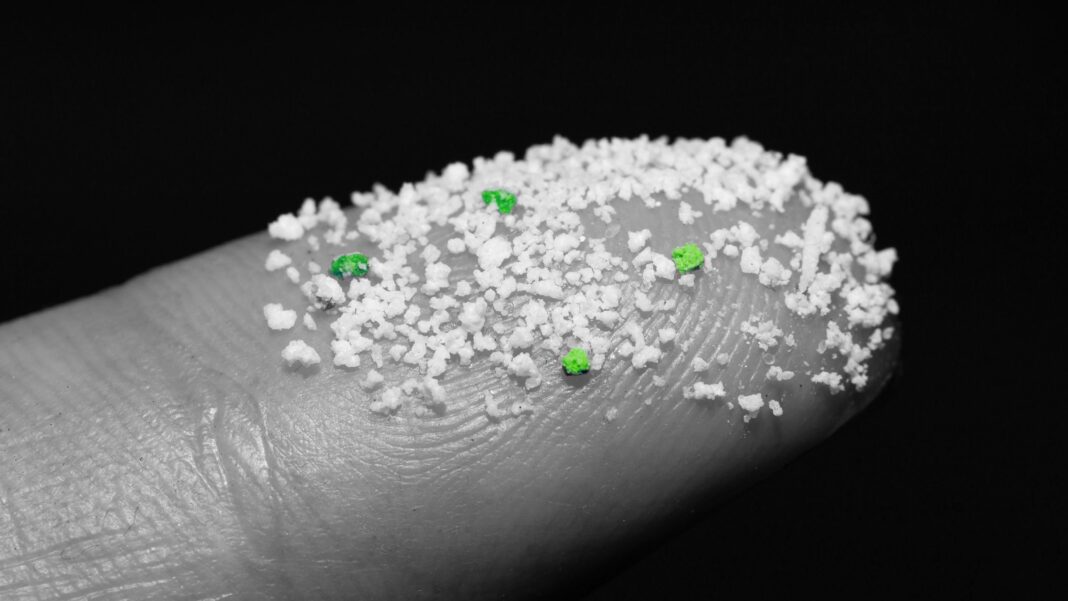“I just want to say one word to you. Just one word. ” “Yes, sir.
” “Are you listening?” “Yes, I am. ” “Plastics. ” The miracle material canonized in that little exchange from The Graduate (1967) is now in almost everything: Even “100% cotton” clothes are coated in synthetic polymers for water-proofing, and paper cups have plastic liners.
But its ubiquity goes much further than that. The world is filling up with microplastics and nanoplastics—invisibly small fragments of the stuff shed in their trillions by the objects we wear and use every day, from boots and baby bottles to credit cards and car tires, and by the masses of plastic trash being broken down by sunlight, wind, rain, seawater, and general abrasion. This stuff is everywhere: literally, everywhere.
Microplastics show up under the microscope in air samples from remote mountain peaks, ice from Arctic wastes, and sediment from the deepest ocean trenches. They’re buried in peat and course through rivers; they float through your living room and swirl from your taps. They’re in our wastewater, and in the sludge from it that we spread over crops.
They’re embedded in plants, animals, and humans; they’ve been found in the first feces of newborn babies and in the bloodstreams of their mothers. And they’re very much not biodegradable, so once the fragments become too small for normal erosion to keep breaking them apart, they may stick around for centuries. So what, you might ask—it’s just plastic! After all, if you accidentally swallow a shirt button, it’ll pass straight through you, right? But when it’s broken down into microscopic fibers, spherules, and shards, it behaves very differently.
These particles leach out toxic chemicals, including carcinogens. Their rough surfaces snag other toxins and microbes, transporting them to new environments and into bodies. Small creatures like plankton and insects mistake microplastics for food, so they get less nutrition, grow less, reproduce less, and sicken more easily, with effects that can cascade all the way up the food chain.
Microplastics have been shown to mess with gene expression and endocrine systems in various animals. Plastic microfibers can get deep into lungs, causing a kind of damage similar to that from asbestos. We don’t yet know how much harm microplastics are doing to human health.
It’s possible that there hasn’t been much so far, though some correlations should have us worried. (Rising obesity, asthma, and mental health issues, while they clearly have other causes, might also be partly due to microplastics. ) But we know two things for sure: Microplastics do cause harm at high enough concentrations, and concentrations will keep rising for a long, long time.
If we stopped burning fossil fuels tomorrow, we’d stop adding carbon dioxide to the atmosphere at once, but if we stopped making plastic tomorrow, the existing plastic in our buildings, appliances, furniture, cars, clothes, toys, tools, and trash would keep breaking down and adding to the indestructible, planetwide microplastic mush. The ill effects might build gradually, or they might come in a rush as the concentration in some critical part of an ecosystem reaches a toxic tipping point. This is the frankly terrifying reality spelled out in A Poison Like No Other: How Microplastics Corrupted Our Planet and Our Bodies , by WIRED staffer Matt Simon, which publishes today ( read an excerpt here ).
I’ve chosen to highlight Matt’s book because I think this is the big environmental crisis the world has overlooked by focusing on climate change. (Are there others you think are flying too far under the radar? Let me know in the comments below. ) The lack of attention to this is probably no accident.
As Matt likes to point out, plastics are the fossil-fuel industry’s secret survival weapon. Even as it purports to be promoting cleaner energy, the industry is keeping itself alive by pushing petrochemicals made from the same black goo. And before you decide that recycling is the answer, think again: Most plastic currently ends up as landfill (or worse, burned) because most recycling isn’t economical, and in any case all plastic, recycled or not, is destined to keep releasing its microscopic spawn into the world.
What can we do about it? Matt’s advice: Don’t let the industry soothe you with promises of sustainability or guilt you into reusing all your bottles (though you should try to use non-plastics where you can). Instead, as with climate change, the main difference will be made not by individual sacrifice but by people pushing politicians to pass laws that limit or tax the use of plastics. As it happens, many policies that limit carbon emissions will likely limit plastic production too.
Plastic doesn’t have to be banned altogether to make a big difference to the risks. And as hard as it is to imagine getting rid of something so widespread and useful, public pressure coupled with lawsuits have successfully tackled other toxic and ubiquitous threats—like lead-based paint—in the past. So the main thing you can do right now is buy and read Matt’s book —or check out some of the stories below that he and others have written for WIRED—and talk to your friends about the issue.
Awareness is always step one. You could also take a look at the work of advocacy groups such as Plastic Pollution Coalition , Beyond Plastics , and 5 Gyres . And if there are other ways you or people you know have found to push for systemic change, please share them with readers in the comments.
.
From: wired
URL: https://www.wired.com/story/microplastics-are-everywhere-what-can-we-do-about-it/



